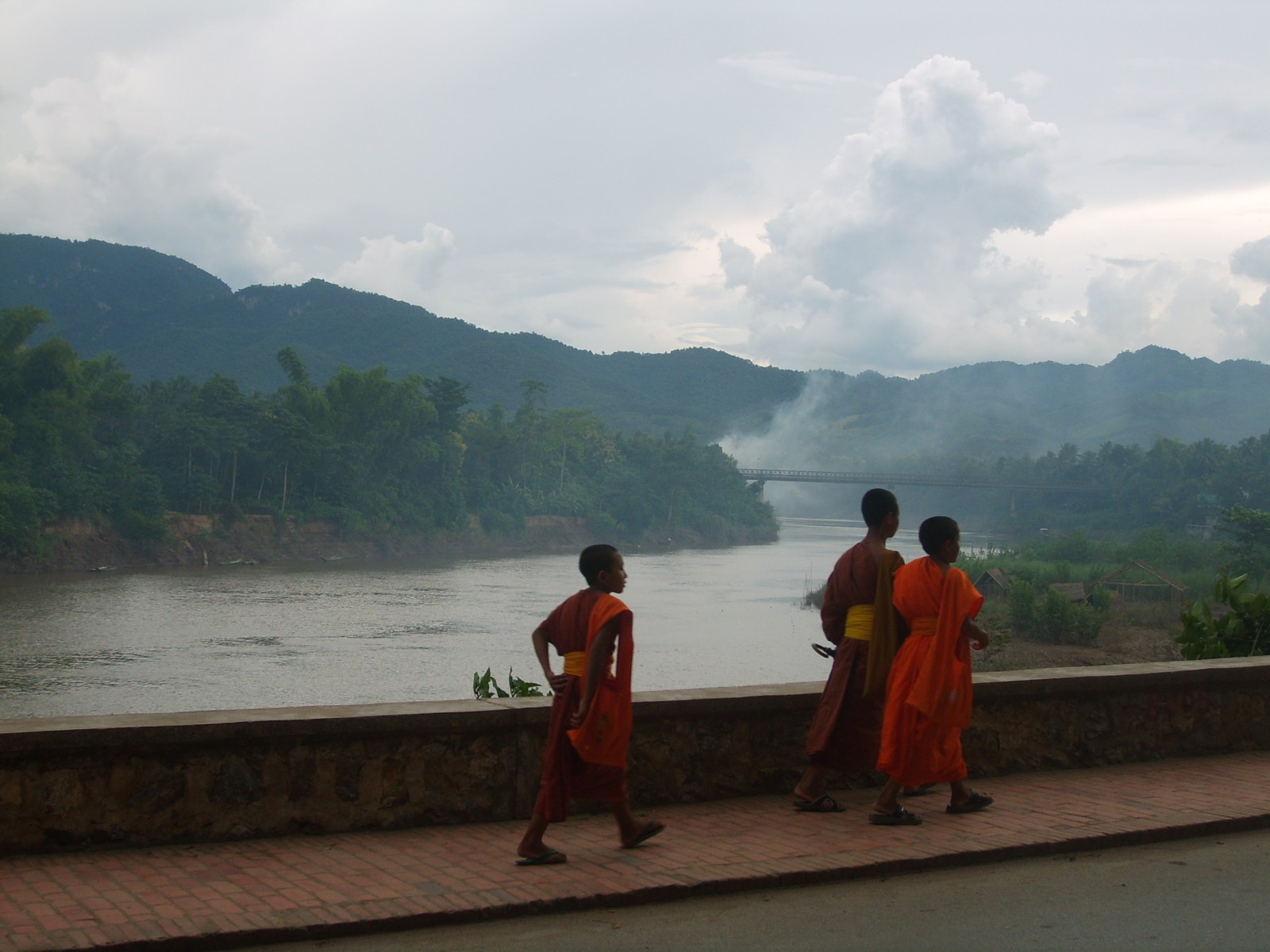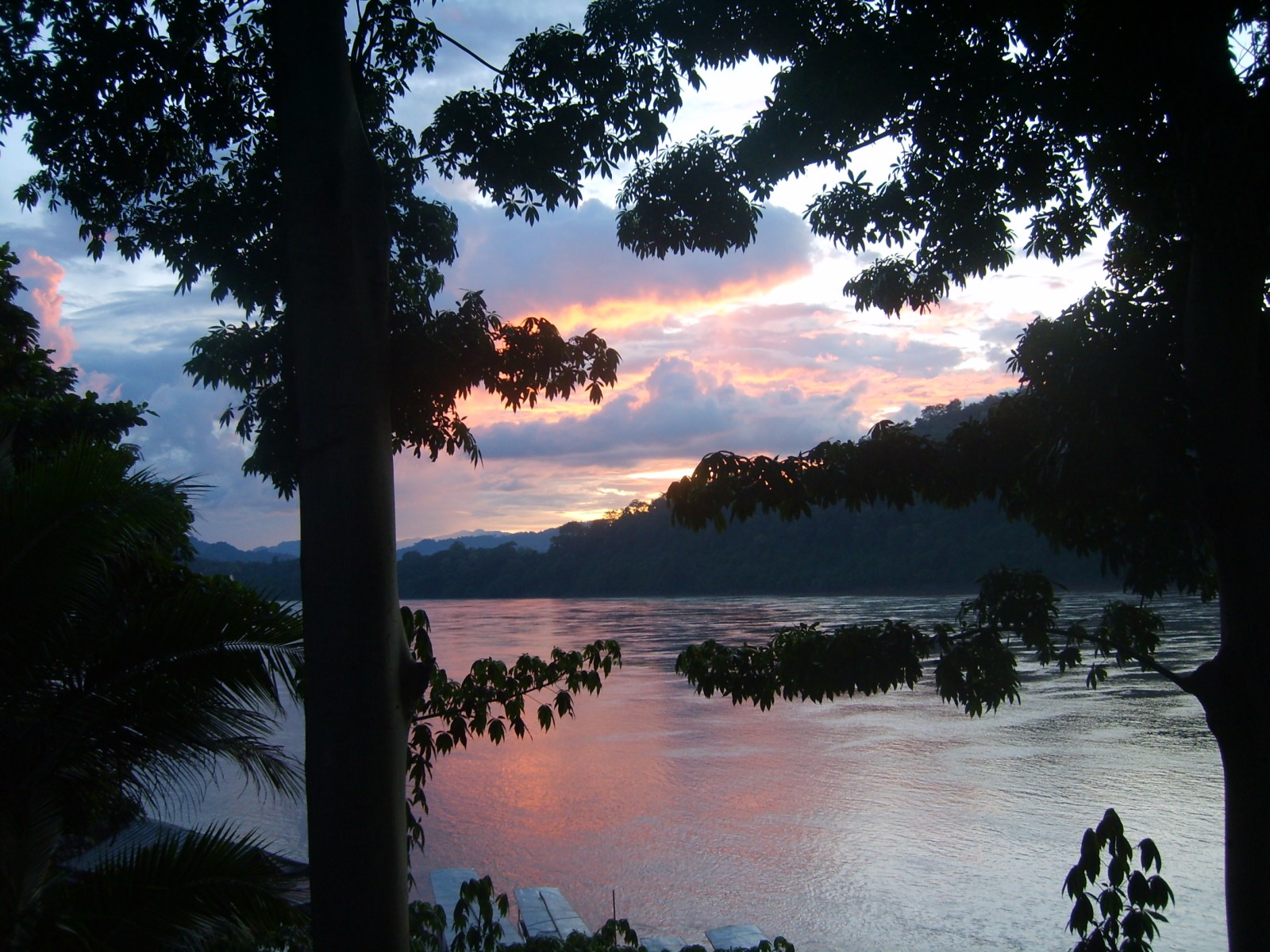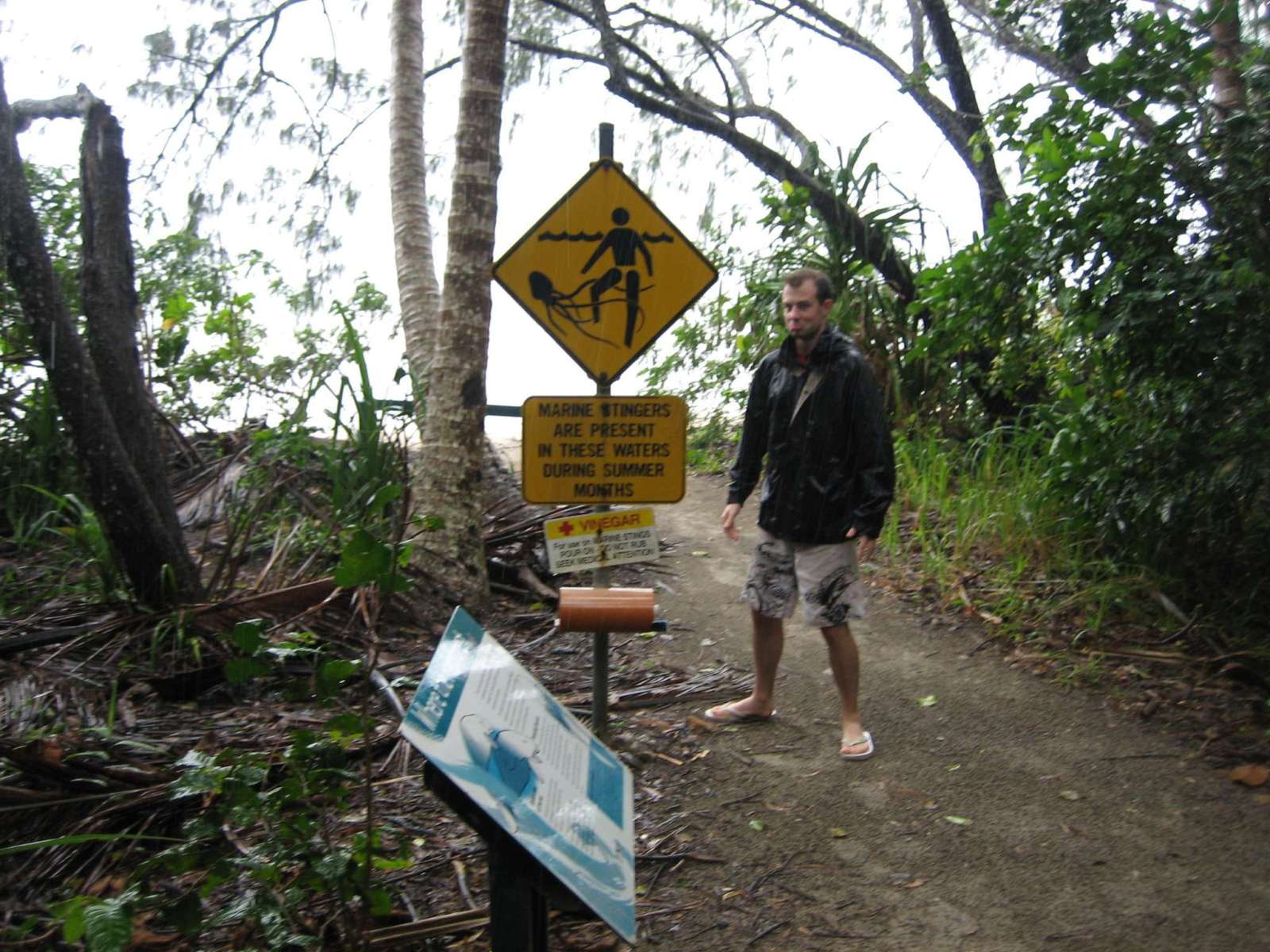Tag: Jungle
Tubing down the Mekong in Vang Vien
Jumping into a rubber ring and drifting the 4km / 2.5 miles through lush jungle, emerald green paddy fields and looking up at the serene karst hills is hard to beat and, whilst the vibe may have changed over the years from tractor-style tires and booming bars to tubes / kayaks and more regulation, its still super fun and a must if anyone is travelling through this picture-perfect part of Laos
A few basic tips:
- The vibe pre 2012 was a very different one where the Vang Vien town itself was a full blown party town that seemed to revolve around all night raves and day time with people stoned AF watching episodes of Friends on beanbags. What came with that was an experience where you drifted down the river on old tractor tires off your face as you swang from ropes in the jungle canopy headfirst into the rushing water below. Now, whilst this was indeed great fun, it also came with accidents (which for anyone who did experiencing the old school tubing, this would have came as no surprise) and wasn’t exactly sustainable for what is a very conservative country. The changes now have closed the rave bars and made the drifting down the river more safe
- The town of Vang Vien itself is not worth spending much time in. Get yourself to the tubing or hikes in the nearby stunning countryside
- For the tubing itself, it’s hard to get wrong. You’ve got two main companies offering it – they’ll pick you up and drop you off / take you back depending on which one you go with
Exploring Northern Burma by train and ferry from Myitkyina, via Bhamo and Katha to Mandalay
One of the most adventurous and “off the beaten track” trips I’ve done was the journey back from Myitkyina back to Mandalay via trains, buses and ferries. As we become more globalised and routes open to mass tourism, there are fewer and fewer places in the world that offer what Northern Burma does – a genuine feeling of adventure as you pass through towns and transit routes still largely untouched by the oncoming wave. When you include the breathtaking views of the mountains, the chance to see the real local villages along the mighty Irrawaddy River, and the old echoes of the former colonial past, this is a truly great travel experience and one that can easily be combined with a 2 weeks itinerary for the highlights of Burma.
I’ve listed more detailed tips below, but three key ones:
- Is it dangerous? The north, like many other parts of Burma, has seen continued trouble in the the form of various low-level uprisings and separatist movements in the three states you’ll be passing through (Kachin, Shan and Sagaing). But tourists are already not allowed in any of the spots where trouble is flaring up. Could you be unlucky and find yourself in the wrong place at the wrong time? Yes, but bear in mind that the route you are travelling is a key transit routes for this part of the country that has various options should the situation change, and that tourists are not targeted. In short, there are far more places in the world you could get in trouble than Northern Burma
- Can my route change? Yes, it can. The ferry ride from Bhamo and Katha to Mandalay is one that seems to be consistently fine, but the bus / ferry route from Myitkyina to Bhamo seems often to be closed off. Obviously you need to check into this before you set off (I asked locals even in Yangon who were able to answer me very quickly), but even if you get stuck when you arrive you have options of the train from Myitkyina to Katha and exclude Bhamo, or just simply to fly
- Enjoy while you can! Whilst my adventure was all the way back in 2006, this part of Burma is still largely untouched by the growing tourism wave that has hit the 4 key tourist destinations in the rest of the country (Yangon, Mandalay, Bagan and Inle Lake). Enjoy it while you can!
Cycling around the Temples of Bagan
4000 Buddhist temples scattered across a wide plain in central Burma that is pushed up on 2 sides by the Irrawaddy River and described by Marco Polo as “one of the finest sites in the world”, Bagan rightly claims its title as the highlight of a trip to Burma, a UNESCO world heritage site and one of the top temple sites in the world
But, as with giant temple complexes of such fame, my key tip is not to get dragged into the mass tourism of the place and, instead, try and give yourself an experience that feels more wonder and adventure rather than latest site to tick off on the tourist trail. To do this, give yourself at least a day to head off on a bike and simply get lost amongst the wonder of it all. Your guide / hotel can give you the directions for where will have the fewest fellow tourists at the time of year (usually the Central and South Plains). This will allow you to enjoy Bagan for what it was like before Burma started to really open up and make you still dumfounded that even with so much variety in so concentrated a place, some temples the size of cathedrals simply have numbers rather than a name. Getting that feeling of wonder by having some of these temples largely to yourself is what makes this such a memorable experience
Trekking the mountains and jungle around Chiang Mai
Chiang Mai is a good spot to spend a day or so checking out the temples and markets, or a bit longer if you take one of the famous cooking courses. But the highlight is heading out into the mountains and jungle on a 3 day trek that will let you stay with some of the the hill-tribe villages, interact with the elephants and go rafting down the rivers
The only problem is that these treks have now turned into a bit of an industry and the market is full of companies that provide the “standard package” that most likely won’t meet your idea of adventure and, worse, may be keeping the elephants in very poor conditions
Bests suggestion is to thoroughly do your research for which company you go with; lean more towards a multi-day trek (there won’t be any “authentic” experiences in a day trip of Chiang Mai); or potentially move move a little further north to near the Chiang Rai / Tha Ton area. It’s worth making the effort though because its a great experience
Roadtrip up the Queensland Coast in winter
The Queensland coastline includes some of the highlights for the whole country and, with world-class beach experiences such as 4WDing on Fraser Island, sailing the Whitsunday Islands and diving the Great Barrier Reef, it is one of the premier coastal roadtrips in the world. Throw into the mix the the hedonistic glitzy skyscraper Gold Coast, the natural phenomenons of the Daintree Rainforest and Atherton Tableland, chilled out islands like Great Keppel and Magnetic Islands, plus the very Australian quirky habit of needing each town to have its own “Big Thing” (think giant prawns, bananas, mangos etc), and you’ve got an unmissable experience
Itinerary below for a 3 week trip and 3 top tips:
- Go in winter – despite most of the Queensland coast being in the tropics, majority of people (Aussies and International) think it’s cold in June and July in Queensland. Whilst it’s certainly colder than normal, the temperatures are very mild in the south and still very much warm enough in the north. Go in winter – it’s cheaper and it’ll be a far more enjoyable experience
- Start in Brisbane or Sydney? – obviously starting in Sydney gives you more to see and includes the wow factor highlights like walking along Sydney Harbour (see the individual travel Sydney Harbour for more tips), the Blue Mountains (likewise the travel entry Train ride from Sydney to Katoomba and checking out the Blue Mountains) and wine tasting in the Hunter Valley. But these highlights are clustered around Sydney. The remainder of the New South Wales coastline between Sydney and Queensland is mainly beach towns like Coffs Harbour and Byron Bay, which are nice, but very similar to what you’ll get all along the Queensland coast and will be that bit colder in winter. It makes sense to start in Sydney if you want to see the highlights around Sydney, less so for the rest of the New South Wales coast
- Can do in 10 days, but 3 weeks better – if you wanted to smash the key highlights of Fraser Island, the Whitsundays and the Great Barrier Reef, you could do this in 10 days, but it would be hectic as it’s around 2,400km / 1500miles of driving. The three weeks gives you plenty of chill out time and the opportunity to see some of the slightly more off the beaten track places like the Daintree Rainforest, Atherton Tableland and Great Keppel Island
Driving through the Atherton Tableland
If driving along the standard East Coast of Australia route, I’d highly recommend taking the short detour slightly inland for the Atherton Tableland. The higher altitude (the tableland is home to Queensland’s highest mountains of Bartle Frere at 1622m and Bellenden Ker at 1593m) makes for a pleasant break from the oppressive heat of the coastline and also fellow tourist numbers drop off dramatically. Give yourself half a day to drive through the pockets of rainforest and see / swim in the magnificent waterfalls dotted all through the area
Camping in the Daintree Rainforest
For most people, the Australian East Coast trip ends at Cairns as it’s the last town to fly back from. But, if you continue just another couple of hours north you hit the UNESCO World Heritage listed Daintree Rainforest which is the oldest continually surviving tropical rainforest in the world. The whole north trip from Cairns feels like you’re escaping the well trodden tourist path as you need to cross flooded roads, say goodbye to electricity from anything other than generators and leave yourself open to nature. You have jellyfish stopping you swimming in some places, the constant sound of birdsong and insects of the jungle, and frogs getting just about everywhere. A real getting back to nature experience – but prepare to get very very wet!
The beaches of the Whitsundays
I know there are white sand beaches all all along the Australian East Coast, and, in a country that already prides itself on its beaches, the competition is fierce. Even so, the Whitsunday Islands takes the prize for the most paradisiacal beach setting in the whole country. The Lonely Planet describes them as like emeralds scattered on aquamarine velvet – that goes part of the way to describing the beauty – you also need to throw in the sheer brightness of the whiter-than-white sand, the warm crystal clear waters and the range of corals all around
Taking time for at least a day trip so you can get in amongst the islands and sun yourself on the perfect beaches is a great experience, and one not to be missed on your East Coast adventure. But, and I regret not doing this, TOP TIP – a multi-day trip to enjoy them outside of the standard day trip would be truly magical









